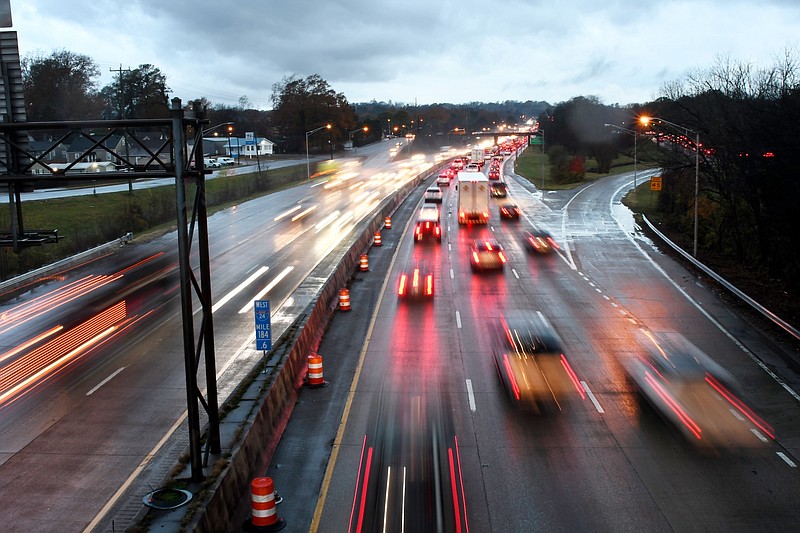Plan Chattanooga, an effort to gauge how residents think the city is addressing issues now and what they envision for the future, recently posted results from an initial survey conducted late this summer.
Residents were asked their opinions on equity, land use, housing, economy, transportation, natural resources, health and parks/greenways. Residents in the following areas were included: Downtown/North Chattanooga; Hixson/Red Bank; Historic River to Ridge; South Chattanooga/Lookout Mountain/Lookout Valley; Brainerd/East Ridge; Highway 58/Tyner; and East Brainerd. Notably, while these eight areas are the focus of Plan Chattanooga, the entire county was divided into 13 areas, and a parallel, coordinated process is underway for the unincorporated portions of the county.
While the Chattanooga-Hamilton County Regional Planning Agency survey does an admirable job at offering residents from every part of the city a chance to share opinions, what should be of concern is the portion of respondents who are neutral on many issues.
Residents' key concerns
The lowest rating among the eight topics surveyed from all areas was for transportation in the East Brainerd area. No surprise there. This fast-growing area is crisscrossed with inadequate roads that lead to frustrating traffic backups. In contrast, the area with the highest transportation rating was downtown Chattanooga.
Transportation is closely linked to land use challenges, as some survey respondents noted. According to a resident of the Hixson/Red Bank area, land use "only occurs in a few places. Land use policy does not direct growth and development because either plans are not followed or policy is not well defined or exists. Only progress is downtown and a few urban neighborhoods. In the suburbs, you could count on one hand where we have walkable developments in place."
Karen Hundt, RPA's community planning and design director, said that establishing short-term, mid-range and long-term goals are the best ways to address certain concerns. Fixing traffic and land use issues in East Brainerd are seen as long-term goals.
"There aren't many easy answers to it," Hundt said in an interview. "Add a bunch of new street connections but a) it's incredibly expensive and b) you'd have to buy a right-of-way that right now is private property."
She identified "upgrading our existing parks, striping for bike lanes, addressing crosswalk issues" as some short-term, less costly goals.
Some respondents pointed to affordable housing as a priority. Chattanooga must solve its affordable housing crunch while also addressing the social implications behind it.
"Affordable housing is always a phrase that is spoken but never fully addressed," a respondent from the River to Ridge area that includes neighborhoods such as Glenwood, East Chattanooga, Orchard Knob, etc., wrote. "Developers are coming into Chattanooga building houses that only many of their Caucasian family and friends can afford right now. And everyone knows that homeownership is not for everyone, but having to to pick between food and lights is?"
With development, Hundt said the city strives for what they call a "centers and corridors" approach.
"We try to focus some of the commercial development and growth in several key centers that are a little more walkable," Hundt said. "Let's try in the future to focus on commercial and retail development in those key centers that are more walk-able, and then everywhere in between, let's try to focus redevelopment along the rest of those corridors with maybe some higher density housing."
With every decision that's made to make our city more livable, we must not forget that every choice has lasting implications on residents and communities.
Overall, the ratings for all eight areas fell between a narrow range of 2.5 to 3.1 on a scale of 1 to 5 — squarely in the "neutral" range. The ratings citywide were:
› Transportation, natural resources and parks and greenways: 3.1
› Health: 3.0
› Housing: 2.9
› Equity: 2.8
› Land use: 2.6
› Economy: 2.5
Neutrality gets nothing done
Overall, what is striking about the survey results is how many respondents were neutral on issues. We do worry that "equity" falling lower on the rating scale indicates Chattanoogans may not care enough about neighborhoods left behind or lacking the same opportunities as other communities.
A citizenry "neutral" on the key issues the city aims to address could mean Chattanoogans need more information or they need reasons to care. It should be Plan Chattanooga's goal, and the goal of Mayor Tim Kelly's administration, to make sure citizens understand the importance of public interest and input as strategies about, for example, growth and development, are advanced.
Before the city's push for more plans and planning become the butt of jokes on Reddit, let's take these recent survey results for what they are: a conscious effort to move the city forward on issues that matter to constituents.
Plans don't go anywhere without buy-in from the community (many opportunities will be available in coming weeks and months); they can be a useful tool, but people turn them into reality.
